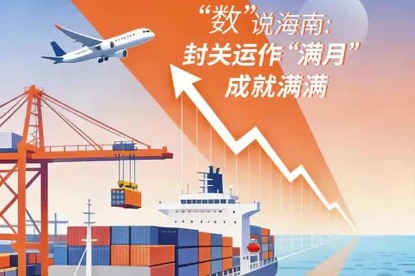Digital finance, platform economy guide future development
By Huang Yiping | China Daily | Updated: 2022-06-13 09:11

The importance of inclusive finance will be even more prominent as common prosperity has been highlighted as a major goal of economic development. It means that economic development going forward will pay more attention to the livelihoods and businesses that inclusive finance serves.
On the other hand, in the new stage of development, China's economy will move to high-quality development, and innovation will play a crucial role in driving economic growth. To drive such innovations, small, medium-sized and micro enterprises are the main force.
In the past, inclusive finance was mainly intended to promote social equity. But today, a more important function is to promote sustainable economic growth.
China made a big leap in inclusive finance from 2016 to 2020 mainly due to the application of digital technology.
Digital finance started in 2004 with the launch of Alipay and the latter developed its own payment system similar to eBay in the United States. In 2010, digital payments were finally launched. Later, WeChat payments arrived along with a series of digital finance modalities.
I prefer to use the concept of digital finance to refer to the application of digital technology in finance. Digital finance is different from internet finance and financial technology. Its connotation tends to balance the two, including both tech companies using digital technology to provide financial services, and traditional financial institutions using digital technology to improve their financial services.
In recent years, the development of digital finance has been very active at home and abroad. But foreign countries pay more attention to blockchain technology, distributed accounts and the metaverse and more specifically cryptocurrency, digital currency, cross-border payments and other fields. China's digital finance is more related to mobile payments, online investment, big tech credit and digital renminbi.
The development of inclusive finance in China is relatively insufficient, and a considerable number of financial services are inadequate, especially for small and medium-sized enterprises, low-income households and rural economic entities.
The above groups have little access to financial services. Therefore, digital finance products have been warmly welcomed.
Another important reason for the rapid development of mobile payments is the application of digital technology. This enables mobile payments to have high service quality and allows the platform to scale profits. Daily active customers of WeChat Pay and Alipay have exceeded 1 billion, which is an unprecedented breakthrough, and few digital payment tools can achieve that.
In addition, digital finance has made outstanding progress in the field of big tech credit. In the past, it was very difficult for SMEs to obtain loans, and it was hard to acquire customers and control risk as well.
Big tech credit and loans help solve the two bottlenecks by making it possible to acquire a large number of customers. In addition to WeChat and Alipay, Douyin, Meituan, JD and other large platforms also have a very large number of users.
Today, anywhere in China, as long as one has a smartphone and a signal, financial services are accessible. Big tech credit is also able to analyze customers, evaluate their creditworthiness and then find ways to convert them into customers, which solves the problem of customer acquisition.
Whether for surfing, searching, socializing, watching short videos, ordering takeaways or using e-commerce shopping, user trends will leave digital footprints.
The accumulation of such a digital footprint becomes big data, which is very helpful to monitor borrowers' conditions in real-time.
Under the traditional model, banks use financial data of an enterprise as the basis for evaluation, but the financial data are basically based on quarterly units. On the contrary, the digital footprint is real-time data, which can illustrate the behaviors or transactions of users in real-time.
With the support of platforms and digital technology, there will be more new development areas in the future, such as wealth management supported by digital technology, intelligent investment advisory platforms, as well as industrial chains, the internet of things and supply chain finance. In conclusion, digital finance has gained some momentum with the help of digital and platform technologies, but there is still a long way to go in the future.
The writer is chairman of the academic committee of the China Finance 40 Forum and deputy dean at the National School of Development at Peking University.
The views don't necessarily reflect those of China Daily.
























